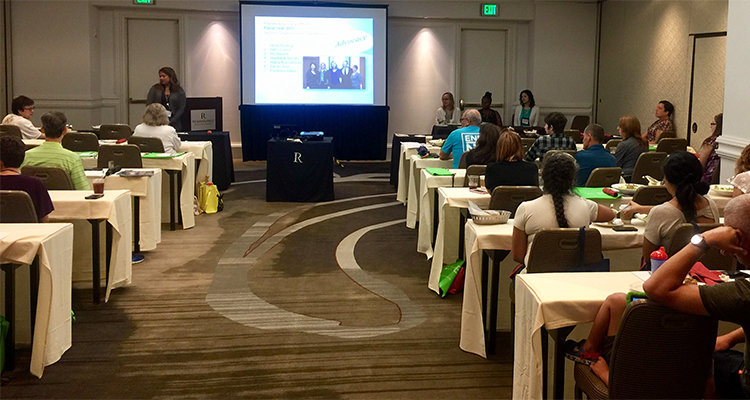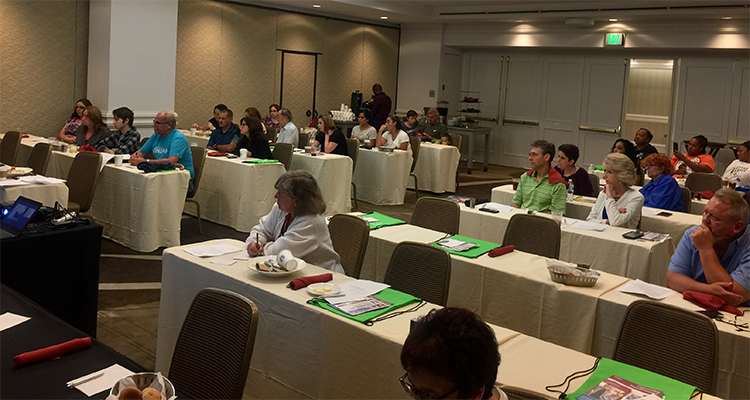Author: Michelle Slimko
Published On: 08/31/2017

The 5th International RASopathies Symposium: When Development and Cancer Intersect, held July 28-30, brought together experts, patients, and families who are all connected by a series of rare disorders.
Caused by mutations in the RASA-MAPK pathway, RASopathies is one of the largest groups of malformation syndromes, affecting about 1:1000. It includes NF1, Legius syndrome, Noonan syndrome, cardio-facio-cutaneous syndrome, Noonan syndrome with multiple lentigines, and Costello syndrome.
Scientists, researchers, and health professionals attend the symposium to present current findings in their area of expertise. Non-scientists, like the families and patients, can also attend sessions to learn more about their disorder, find out about the latest treatments, ask questions, provide input, and most importantly, collaborate. This is especially important for the rare disease community as the RAS pathway community is fairly small.

In the spirit of the meeting, the Neurofibromatosis Network hosted a lunch session for families during this symposium. Michelle Slimko gave a presentation on what the NF Network is doing on a national basis as an introduction to the attendees.
“Overall, we have over 40 participants representing the Florida and other states like Georgia and Tennessee,” Slimko said. “We had a panel of experts that include Dr. Brigette Widemann, our NF patient advocate, Beverly Oberlander, and Genetic Counselor Alicia Gomes and Dr. Ashley Cannon, both from the University of Alabama.”
Slimko left the symposium with several observations.
- No one likes to feel alone. The NF Network provides resources, information, and education about how to get connected and get involved so you don’t feel alone.
- Some NF patients may have learning disabilities that continue into adulthood. It’s important to think about how to address this in teaching and patient materials. We cannot forget the importance of this for adults with NF as well. We need to educate health professionals and clinics by reminding them that NF patients eventually age and need support in the years after many clinics and pediatricians stop extending care.
- There several powerful resources on the Internet. The NF Network’s Inspire site offers online discussions with over 20,000 participants. The NF Network website also provides a wealth of information for various audiences, and links to social media sites like Twitter and Facebook can be found on the site as well.
- There is such value in connecting scientists, health professionals, and researchers with actual patients and families. Through these connections, patient feedback can be taken into consideration and help experts as they address real world issues patients and families experience. This is where the magic happens. Meetings like this grow a network, feed a community, break down walls, and drive collaboration. These are all important elements not only for the NF community, but also the rare disease community as a whole. This is a great model of how to make those connections work in sync!
There is still work to do. Here are some things to think about going forward.
- Rare disease patients need communication and materials they can use and understand. This helps reduce confusion, can provide overall clarity about their own understanding of what is taking place and what is available to share with their doctors.
- Events like this benefit the experts too. I spoke to a researcher during lunch. He told me, “This is my first meeting and it’s good to be here because at least my research is actually useful.” The researcher had never attended this conference and didn’t know the role his research played. We need to continue connecting this important work to researchers so they can apply and appreciate their work to the patients they are helping, even more important for rare disease patients! I told him, “Thank you for what you are doing. This is so critical because you are one of not many scientists working in this field. Your work gives this community hope and a future.”
- Involving family and others is invaluable. I asked my children to help set up and register new participants. It’s important to teach our next generation about the importance of volunteering, helping others, and giving back.
Want to view archived newsletters? Click Here!
Newsletter
Sign up to receive the latest neurofibromatosis news and information in your inbox!
Subscribe